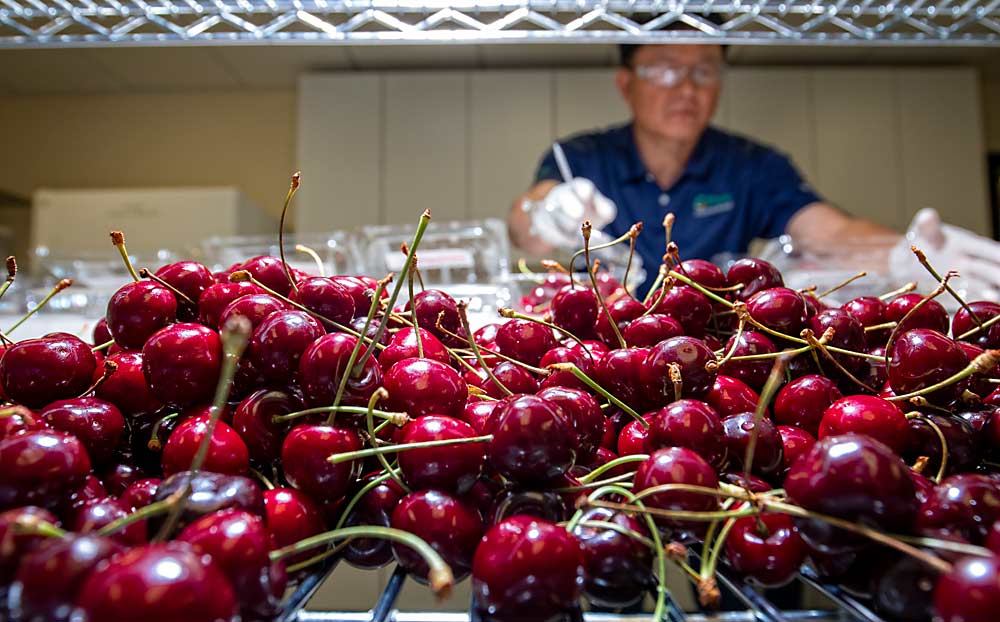
The first biological fungicide registered in the U.S. was successful in protecting cherries at California packers last year and is expected to be available for use in Washington this coming season.
Natamycin, sold under the trade name BioSpectra, is a biologically derived fungicide that’s long been used as a food preservative and was registered for use on cherries, stone fruit, pome fruit and citrus in 2016. It’s a promising alternative to synthetic fungicides in that it offers broad-spectrum control of the major postharvest pathogens with no risk of resistance, according to Pace International, which developed the product with Dutch chemical giant Royal DSM.
“It seems to have worked fine,” said Keith Wilson, managing director of King Fresh Produce in California’s San Joaquin Valley. The company tried BioSpectra on its cherry line last season, motivated in part because it cost less than the fungicide they were using, he said. “It seems like it did extend shelf life a little bit,” he said,
Despite successful commercial tests, some challenges to widespread use remain, said Richard Kim, director of plant pathology for Pace who helped develop the product. BioSpectra can’t yet be used in a dump tank because commercial sanitizers degrade the biological product. Research to develop a compatible sanitizer is ongoing.
Packers can apply the product with a line spray, however, Kim said. That’s why the first commercial use was in California, where line spray systems are more common on cherry lines.
“We still need to convince the cherry packers in Washington. The majority of them are using recirculating systems, so we need to convince them that the spray system works as well as the recirculating,” Kim said.
An additional hurdle facing the product’s use in Washington is the state requirement for a discharge permit, which Kim hopes will be issued in time for the 2019 cherry harvest, he said. California and Oregon require no such permit.
Also in the regulatory works is filing for minimum residue tolerances in Japan, South Korea and several other Asian countries that are the primary export market for U.S. cherries, Kim said. That’s expected to take a couple of years. Natamycin is exempt from a minimum residue tolerance in the U.S.
That’s a plus with packers, as is the option to have a natural alternative to synthetic fungicides, Kim said. The California packers who tried BioSpectra last year said that the “BioSpectra-treated fruit looked better than those treated with other synthetic fungicides,” he said, calling it a very optimistic experience.
“In addition to the stone fruit, cherries and pome fruit registration, we are trying to expand our registration on other crops, including blueberries,” Kim said. “We did a commercial trial last summer on blueberries and it looked pretty promising.” •
—by Kate Prengaman
Related: New postharvest fungicide idea comes from an old place






Leave A Comment